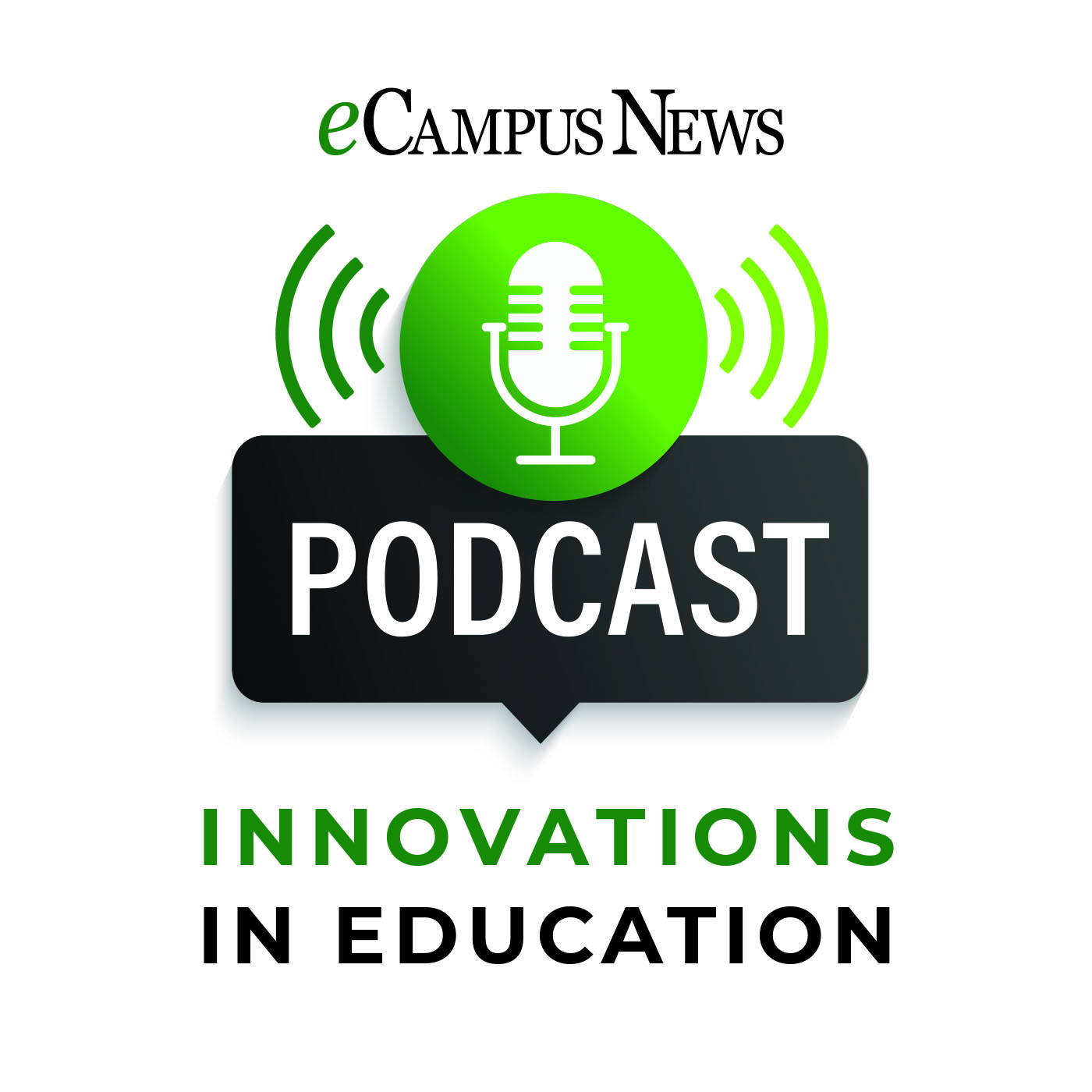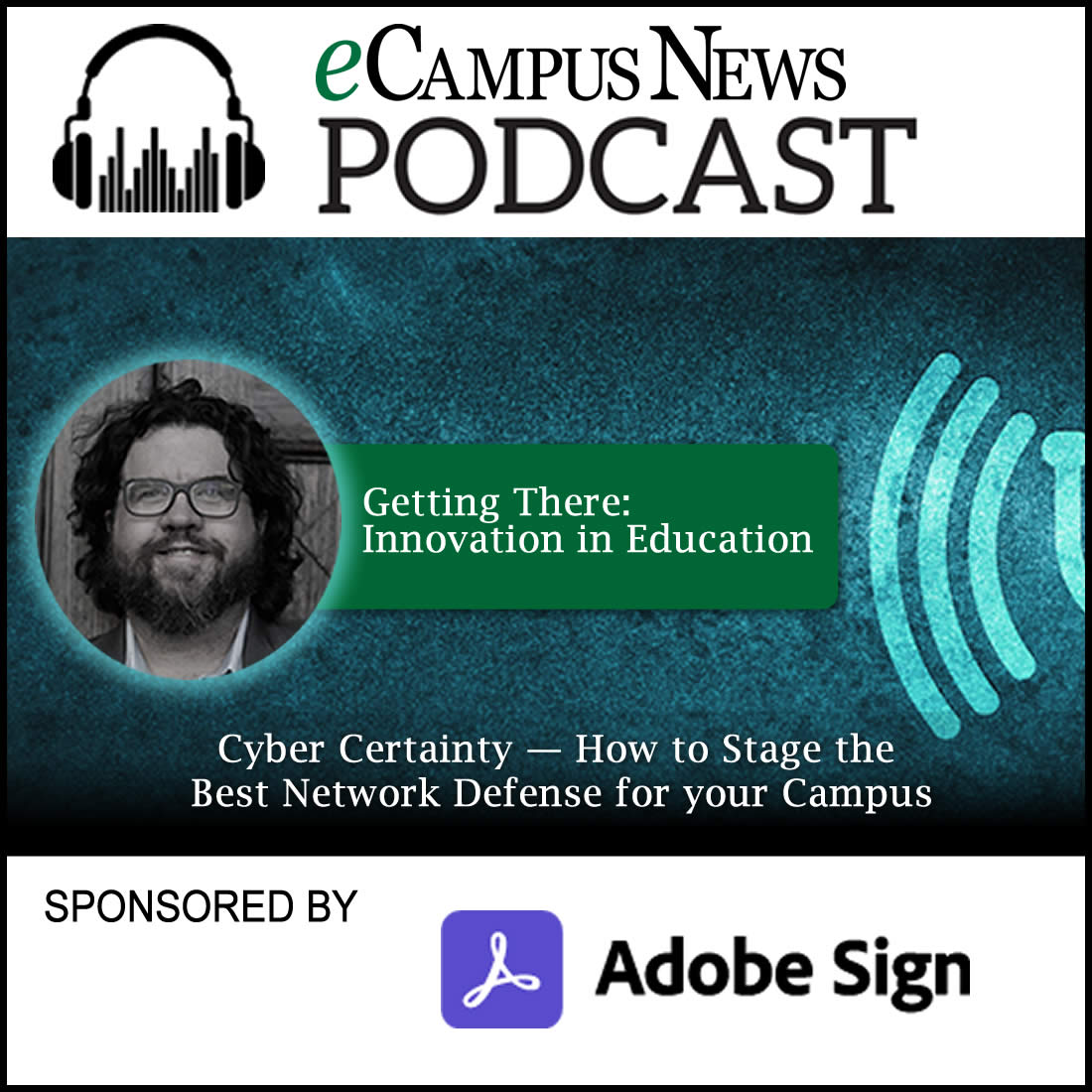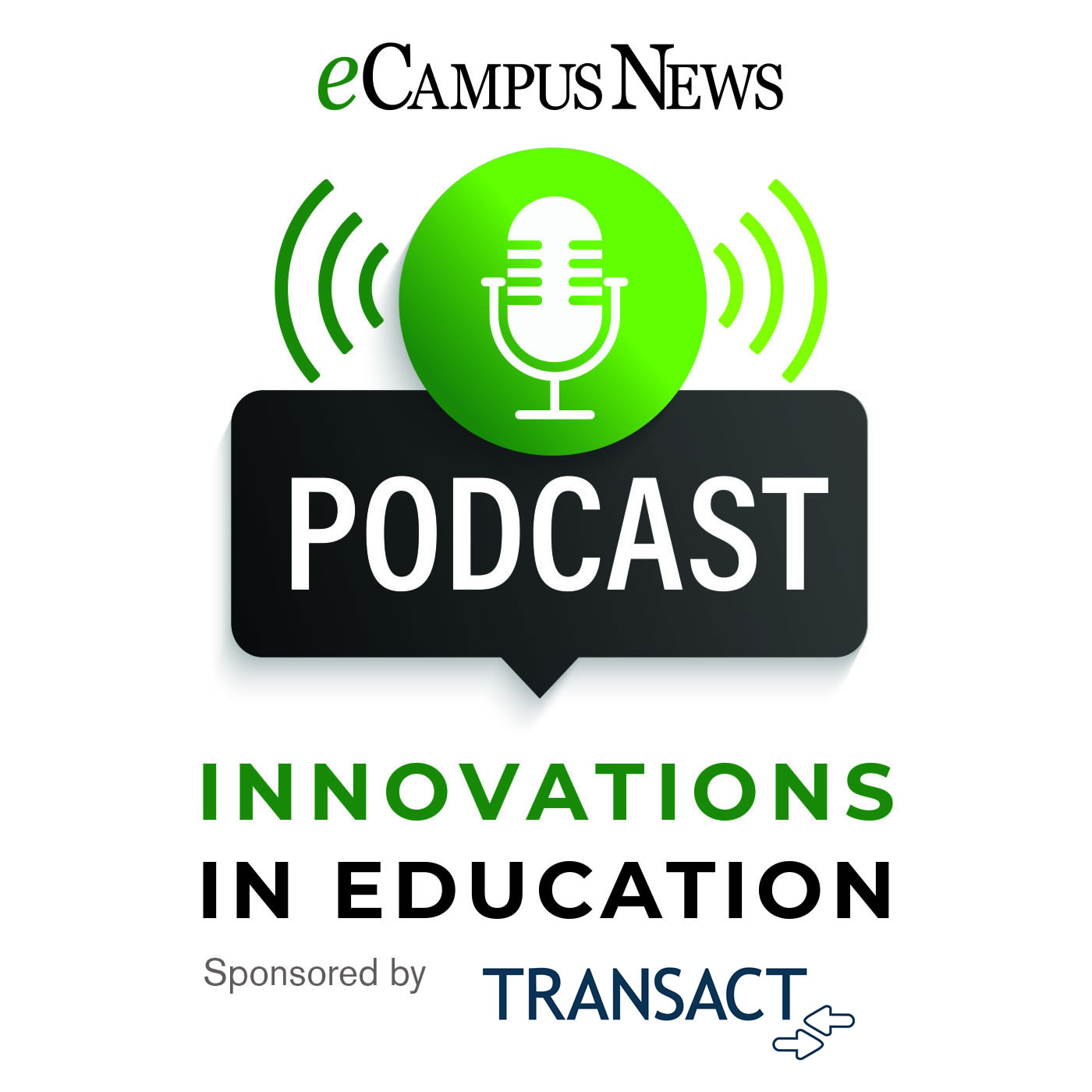Episode Transcript
Audio file
Becoming an Employer of Choice in the New World of Work 1.mp3
Transcript
Kevin Hogan
This episode of Innovation and Education is brought to you by UKG. UKG is on a mission to inspire every organization to become a great place to work through HCM technology built for all. More than 80,000 customers across all sizes, industries and geographies trust UKG payroll, workforce management and culture cloud solutions to drive great workplace experiences and make better, more confident people and business decisions. OK. Hello and welcome to the latest episode of Innovations in Education. eCampus News podcast on the latest and greatest trends in higher Education and technology. My name is Kevin Hogan. I'm content director for ECampus News, and I'm glad you found us. As we continue to emerge from the pandemic, the world of work has changed forever. Employees across the nation, including in higher education, continue to reconsider their job and career choice. Moreover, unprecedented demographic changes have made focusing on diversity, equity, inclusion and belonging not just the right thing to do, but a business imperative. According to the College and University Professional Association for Human Resources. Returning to a business as usual strategy is not going to work. That won't help with recruiting, retention and the engagement of talented colleagues. We must be willing to rethink and redefine our recruitment and retention efforts. I had the chance to speak with Bob Lavigna. Bob is an award-winning leader and innovator with more than 30 years of experience leading organizations and programs, including those in higher education. At UKG, Bob advocates for promotes and advises on effective practices that enable organizations to attract and retain talent. He previously was director of the Institute for Public Sector Employee Engagement. Where he worked with organizations across the nation to measure and improve engagement as a key to maximizing organizational performance. He is the author of engaging government employees, motivate and inspire your people to achieve superior performance. That's with Harper Collins publishing. Before leading the institute, he was assistant vice Chancellor and director of HR for the main campus of the University of Wisconsin, where he directed campus wide HR policies and programs. Bob was also an adjunct professor in the School of Public Affairs there. We spoke for almost an hour on this subject, which you can find up on eCampusnews.com under the webinar tab and the title becoming an employer of choice in the new world of work. What follows are a few highlights. Bob emphasizes the complexity of managing higher education institutions. And highlights the diverse workforce of those Campuses that comprise both faculty, staff, researchers as well as frontline employees. He notes that the workforce is akin to managing a city with various departments and functions. He understands the diverse needs and perspectives within this workforce is absolutely crucial for effective management. Here's a snippet.
Robert J. Lavigna
I think what the current events point out, among other things, is the complexity. Of higher education institutions, and I think we'll talk a little bit about that. But my experience and the experience of our our listeners viewers today is. Probably higher education. It's hard to imagine a more complex organization to manage, but on the other hand? The United States still has the greatest higher education system in the world, and we we get a lot more students from foreign countries coming to our institutions than we send to their institutions.
Kevin Hogan
Absolutely. But let's step back a little bit and kind of look at the the, the characteristics of this new world of work. I mean, as we communicate here on zoom. Probably in May of of 2019 this would have been a novelty, right? I mean, we would have been probably both fumbling with our. Video cams and and cameras maybe felt a little uncomfortable being in this sort of setup as most people would have been at that time and now all of a sudden this is probably one of the most pervasive technologies on on how people work, you know and.
Robert J. Lavigna
Yes.
Kevin Hogan
But I guess we have to start back at the pandemic and that that, that forced migration to remote learning as well as remote administration of learning back in 2020. Let's start there. I mean is that is that the appropriate pivot point to talk about this new world of work?
Robert J. Lavigna
Sure. I I think we need to do that, Kevin. And certainly technology has changed the way we interact with each other caused by the pandemic. But it's really much broader than that. When we talk about the workforce, we we believe and we're not the only ones who are saying this, that what has occurred over the past four years, it's been almost exactly 4 years is a permanent evolution and where, how and why. People want to work.
Kevin Hogan
Bob also discusses how the pandemic has accelerated a permanent evolution in the way people want to work. He emphasizes that employees now prioritize flexibility, voice, and well-being in their work environments. Employers need to adapt to these changing expectations by offering flexibility in work arrangements and actively listening to employee feedback. Listen, as Bob goes into some detail about that.
Robert J. Lavigna
Let me also give you a little more. Context, especially in. In higher education and we have a lot of data from the Bureau of Labor Statistics from various organizations that have conducted surveys showing. That there really is a workforce crisis. You know 3 to 4 million people each month continue to leave their jobs, record turnover, and most of those, some of them are retiring, some of them leaving a workforce, but most of them are moving to other jobs that better need meet their needs, have better cultures. So for example, in higher education. For the year that we have data, the most recent year. There was about a 15% turnover, which is higher than a lot of other organizations and lower than it's traditionally been. In higher education, there was a certain we have data from Cooper, HR, we have data from EDUCAUSE. One survey showed that higher education employees, 50% of them. Said they are likely to look for a new job in the next year, 30. 3% a third. 3rd. Said that, they're they're very likely to look for a new job in the next year. So there is a crisis in the workforce and it is affecting higher education. So higher education institutions need to understand, as I said. What? How their employees feel about working there and then take action to try to reduce or prevent that kind of turnover.
Kevin Hogan
It almost sounds. Like an existential crisis, almost though, I mean we need it's it's. What do you do? And is. Is it about changing? Culture is it is, is it about changing policy like like official policy. Like because there's. The the big picture of. It and then there's the day-to-day of it, right? I mean, like, what's this flexibility mean that does? Six years ago. If I were to have a doctor's appointment, I would have taken off from 2:15 to 3:45, not here at East School Media.
Robert J. Lavigna
By the way. Of course, of course.
Kevin Hogan
Here we're very flexible, but then you know, kind of make sure that you were back and you know here I am and this and that. Post COVID I I get the sense of people say, well I'm. I'm taking the day. I'll work from home because I have a doctor's appointment and not have this need or this internal pressure to kind of be. Back on the clock, where? But back in the cubby? I mean, can you talk a little bit about like the big picture versus the the reality of the day-to-day?
Robert J. Lavigna
Yeah. Well, you know you, you your question was, is it policy or is it culture? My answer is. Yes.
Kevin Hogan
Both.
Robert J. Lavigna
It's it's policy, but it's also create. And. A culture of trust. I mentioned great place to work. We have found that trust. Is a key driver of engagement of retention of performance. Employees want to be able to trust each other, their colleagues. Trust the person they report to. And trust the organization. So there is some some policy stuff. Obviously we can create policies that that build in a little more flexibility. We can create policies that institutionalized hybrid work, for example, for those people who can work remotely at least part time. But it often comes down as you suggest, to culture. Do we have a culture of trust? Do we have a culture that values individual employees, that we, we treat them as people? Not just employees. And I'll give you an example. It's it's pre COVID but but I think it's relevant. When I was at University of Wisconsin, we often have conversations with our managers and and supervisors and our frontline employees. In fact, we would conduct quarterly HR forms. We do one in the daytime and we do one from 11:00 PM to 1:00 AM at night. In order to allow our second and third shift folks to participate, we call them the midnight sessions and our employees. And we also did surveys. We did 3 surveys while I was there in my 6th.
Speaker
Hmm.
Robert J. Lavigna
Years. And employees were telling us things like my supervisor is not flexible, is not allowing me to take time off. To. Talk to my kids, teachers, or deal with other personal issues and our supervisors would come back and say, well, you know, if we do it for one, we have to do it for everyone. And our answer to that. Is was exactly.
Speaker
Me.
Robert J. Lavigna
But you have to understand that if you are flexible and you treat your employees as people, not just as employees, you will build engagement. You will build commitment, you'll build retention and also performance.
Kevin Hogan
Bob also underscores the importance of creating a positive employee experience in order to drive engagement and retention of employees. Strategies such as customized onboarding recognition programs and fostering a sense of belonging are key to enhancing employee satisfaction and commitment. He stresses the need for organizations to collect data on employee sentiment through surveys and then actually take proactive steps to address the data that is being collected here. Have a listen.
Robert J. Lavigna
Well, you know, I wish that there was a one-size-fits-all solution to becoming an employer of choice, but there there really isn't. And what we argue is. You have to have data and that should resonate with higher education. You have to understand. How your employees are feeling about working in the organization, whether or not they have that, that connection, that Mission focus, which is so important in higher education, whether they feel their experience, we call it the employee experience is is a +1. So you need to collect. Data. Interact with your employees the workforce to understand what they feel good about there always going to be some things that employees feel good about and what they believe the organization needs to improve with respect to the employee experience. So we're seeing organizations try to. Allow their employees to work more flexibly. There was another data point Gallup did a survey and determined that 81% of employees. This is across public and private sectors. In the US, 81% of employees who can work remotely. In other words, their jobs allow them to work remotely, are working remotely. The overwhelming majority in a hybrid kind of kind of arrangement. So if you want to be competitive for talent, for those employees who can work remotely, you have to give. Yeah. That option. Employee recognition. Employees want to be valued. Engaged employees are feel their organization values them, and in return they're willing to deliver what is known to researcher term as discretionary effort and no words they're going to do whatever it takes within reason, of course, to help the organization succeed. So there, there are a lot of ways. With respect to the employee experience that employers, including in higher education can. Boost engagement and we know empirically that engaged employees are much more likely to stay with the organization. One of the components of UK G is a great place to work institute. Which certifies organizations around the world, including in higher Ed. As great places to work based on our our our trust index. OK. So we haven't, we have a huge database, 30 years of these surveys, we have 100 million. Employee surveys in our database and what we have found is that great place to work certified organizations have 50% less turnover than other organizations. So there are are real, there's a real strong business case. Or by focusing on the workforce.
Speaker
Just.
Robert J. Lavigna
Trying to build engagement. Delivering a positive employee experience produces positive outcomes.
Kevin Hogan
Again, you can hear the entire conversation up on East Campus News's webinar page under the title, becoming an employer of choice. In the new world of work. My name is Kevin Hogan, and thanks for listening. Again, this episode of Innovations and Education was brought to you by UKG. With the world's largest collection of people, data, work data and culture data combined with rich experience using artificial intelligence in the service of people. UKG connects cultural insights with business outcomes to show what's possible when organizations invest in their people. To learn more, visit UKG.com.


